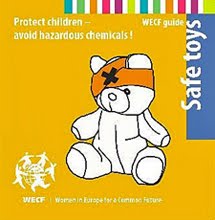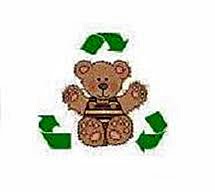
Tips for Green Kids' Ethical Toys! Which one are they? Well, if you want to make sure that when buying toys/games for your children, they are “green” and safe for their health, consider some advices below on how to find more sustainable and less toxic toys, better for the child and the environment:
1. Choose natural and organic toys so to avoid toys made of conventional fibers sprayed by pesticides and chemically treated fabric, unhealthy for the child and the environment. Look for organic and naturally-dyed fabrics (preferably Öko-Tex certified), such as organic cotton, bamboo, natural wool, linen, kapok, or hemp used for soft toys.
2. Wood is great! Look for toys made of FSC-certified wood which are sustainably made toys. The FSC certification is important; it ensures that the toy you buy is made of wood that has been harvested responsibly, allowing for sustainable growth. For the little ones, untreated, unpainted wood is safe to chew unlike plastics that may contain PVC.
3. Look for PVC-free. PVC (polyvinyl chloride) seems to be everywhere we look. Many PVC toys contain phthalates, chemical compounds that make the PVC plastic more flexible, which initial studies have linked to both cancer and hormonal disruption.
4. Power down. Batteries have become second nature in most toys today. It is a problem when these toys get disposed of, and who wants to give their child the opportunity to chew on a battery? Could your child stay just as entertained with a simpler toy, and maybe learn about renewable energy (i.e. solar or dynamo powered toys)?
5. Non-toxic paints. The paint on your child's toys may contain VOCs (volatile organic compounds). There is a range of new toys that use water-based and low-VOC or non-VOC paints (and nearly all of them will advertise this fact). A non-toxic toy means a “healthy” and a safe toy for the child and the environment.
6. Long-life toys. When purchasing a new toy, consider the toy’s potential longevity. Quality means not only that you will not have to buy another one shortly; it also means that when the toy is no longer in use, you can always pass it along. In the long run some money saved + less garbage to the landfill = good for the children and the planet!
7. Have you noticed that sometimes it is the box that interests the child? It can prove the most fun to imaginative children. So, next time you think about throwing away the box from that new toy, think of it as a potential arts and crafts project instead. It is even better if the box is made of recycled material…!
8. And how about the inside of the box, often containing useless plastic packaging that risk ending up in the nature? Maybe consider giving priority to toys with least possible wrapping and packaging?
9. Place of origin. When choosing a toy, do you wonder where and under what human and working conditions the toy has been produced? The name/country of the “designer”/brand is not always sufficient; check for the place of production and if possible try to choose companies/producers who are committed to safety and quality while embracing fair trade practices.
torsdag 1 oktober 2009
Etiska ekologiska leksaker
Etiketter:
Gröna tips,
Hälsosam miljö,
Leksakssäkerhet,
Leksakstillverkning
Prenumerera på:
Kommentarer till inlägget (Atom)












Inga kommentarer:
Skicka en kommentar